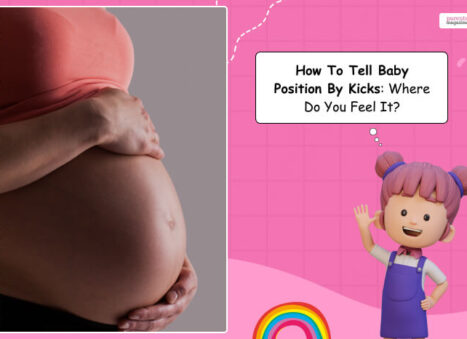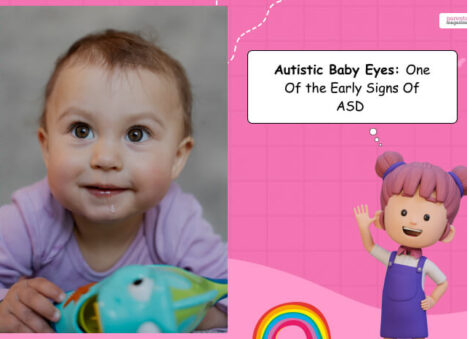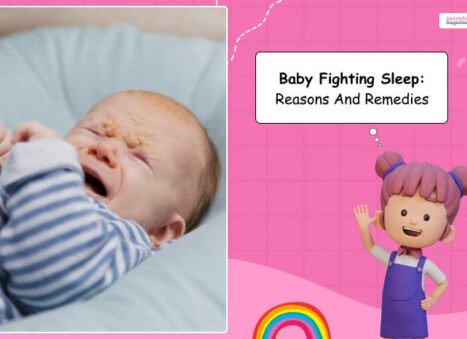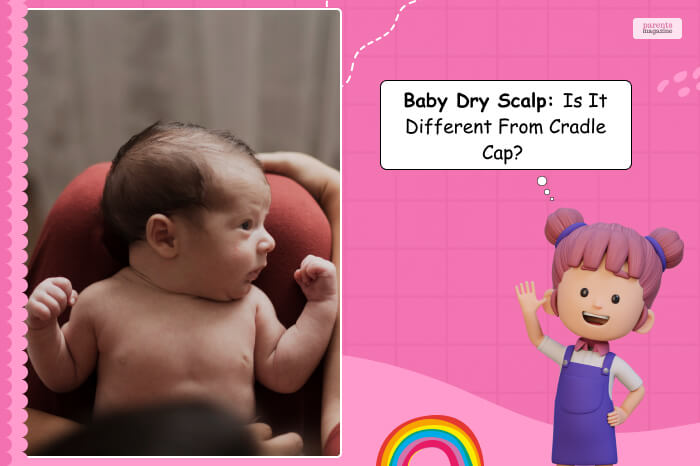
Baby Dry Scalp: Is It Different From Cradle Cap?
Being a first-time parent teaches you a lot. Sometimes you get frazzled because something is happening to your baby, and you are not sure what it is. One of those things is a baby’s dry scalp.
Anyone can get a dry scalp, but it is not always what you expect to see in your baby. However, various reasons cause dry scalp in babies and this is quite common as well. They usually get it within the first 12 months of their birth.
Symptoms For Dry Scalp in Babies
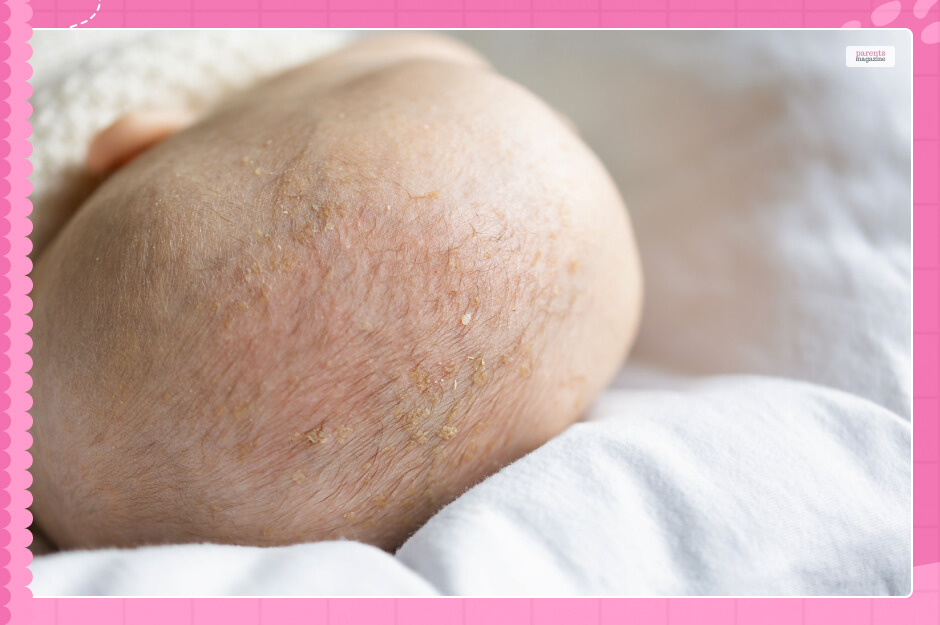
A dry scalp on a baby might make you feel uncomfortable. However, there is nothing to be worried about. It does not cause any harm, and it is also not difficult to treat. Here are some of the symptoms which can help you identify the condition.
- Flaky skin: Baby dry scalp is a common issue and one of the main symptoms is that you will notice a flaky scalp. In the first few weeks, their skin often tends to peel off. This happens because they are developing healthy skin underneath, so a baby flaky scalp is nothing to be worried about.
- Dull skin: A dry scalp means there is a lack of moisture in the skin, this causes them to lose their sheen and look ashy or dull.
- Tight-looking skin: If they have a dry scalp, it might appear tight and flaky.
- Signs of discomfort: Their scalp often feels tough when you touch them.
- Rough skin: If you notice your baby scratching their head often, or getting fussy more than usual, then there is a possibility that they have a dry scalp.
Baby Dry Scalp: Causes Behind The Condition
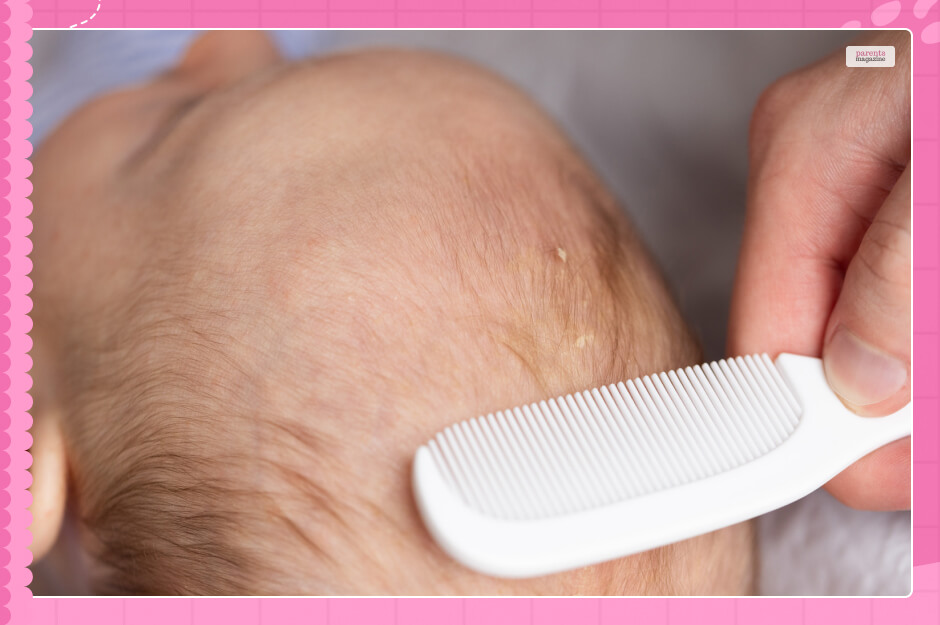
Compared to an adult a baby’s skin is more fragile and thinner. They lack the proper moisture barrier, and it takes time to grow. This is what makes a baby more vulnerable to environmental irritants, and they lose moisture quickly. Some of the common reasons behind baby dry scalp are mentioned below.
Environmental Factors
Certain environmental factors contribute to dry skin on baby head. Here are the factors mentioned.
- Long & hot baths: When a baby is bathed in hot water for a long time it can dehydrate their skin.
- Cold, dry weather: Exposure to wind, dry air, and cold will strip the moisture from the skin and the baby’s hand, face, and scalp as well.
- Frequent baths: If you give the little one’s baths often, it can strip them of natural oils, and moisture in the skin, and cause a baby flaky scalp.
- Overheating and sweating: Sweating and overheating can cause the same problems that a long hot bath causes. Overheating can cause sweating, and that can leave the skin wet for a long time. This can cause dryness.
- Sun exposure: When a child is exposed to UVA/UVB rays without any protection, it can cause skin burns and dry skin.
- Chemical irritants from detergents & cosmetics: A baby’s skin is very sensitive. So, if you use any skin care products or laundry detergents with added fragrance, irritating chemicals, or harsh soaps, this can irritate their sensitive skin and result in dryness.
- Environments & household allergens: Any kind of allergen like pet danger, smoke, pollen, or dust can cause allergic reactions, which can cause them to dry scalp.
Medical Conditions
Some medical conditions can make the baby’s scalp flaky, dry, and irritated. If you notice any of the below-mentioned reasons, then contact a pediatrician immediately.
- Cradle cap: The other name for cradle cap is seborrheic dermatitis or in simple terms “baby dandruff.” It is identified as crusty, yellow patches of uneven rough skin on the scalp.
- Ringworm: This is a fungal infection identified by red rings on the scalp of the baby.
- Baby eczema: This is popularly known as atopic dermatitis. It is identified as scaly patches of skin that cause itchiness. This happens not only on the scalp but also on the face. These mostly look like red patches and can look weepy and often ooze.
- Baby scalp psoriasis: This is a skin condition that causes red patches on the skin known as plaques. It gets sore and itchy and can cause pain as well.
Cradle Cap vs Dry Scalp: The Difference
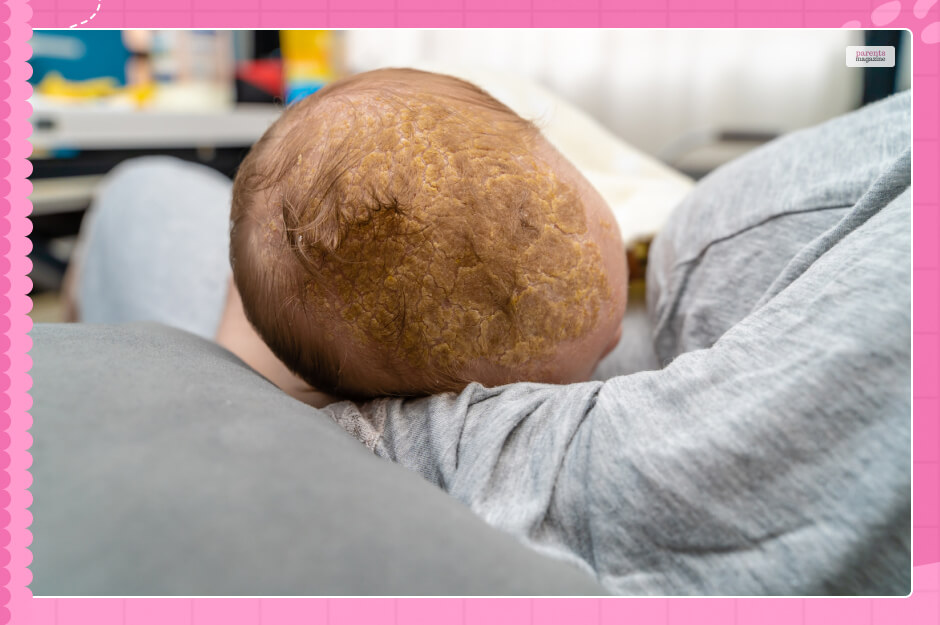
Sometimes dry skin on the scalp of the baby causes flakiness. However, the cradle cap of baby dandruff has its symptoms. Before we learn about the symptoms of baby dry scalp, now let’s take a look at the symptoms of a cradle cap.
- The skin appears greasy.
- The top of the skin looks thick. It is sometimes yellow and sometimes red. Also, the skin sometimes looks crusty, scaly, and rough and often turns purplish.
- There are often crusty patches on other body parts like eyelids, neck, ear, armpits, or in the diaper area as well.
- In some major cases, the baby loses hair where the patches are.
- The probable causes are the overgrowth of yeast and issues with the sebaceous glands.
Baby dry scalp does not involve any discoloration or yellow patches in the skin. A dry scalp is not a serious issue and can be treated at home. However, the cradle cap does require medical attention even though it is mostly harmless and contagious.
How To Treat Baby Dry Scalp
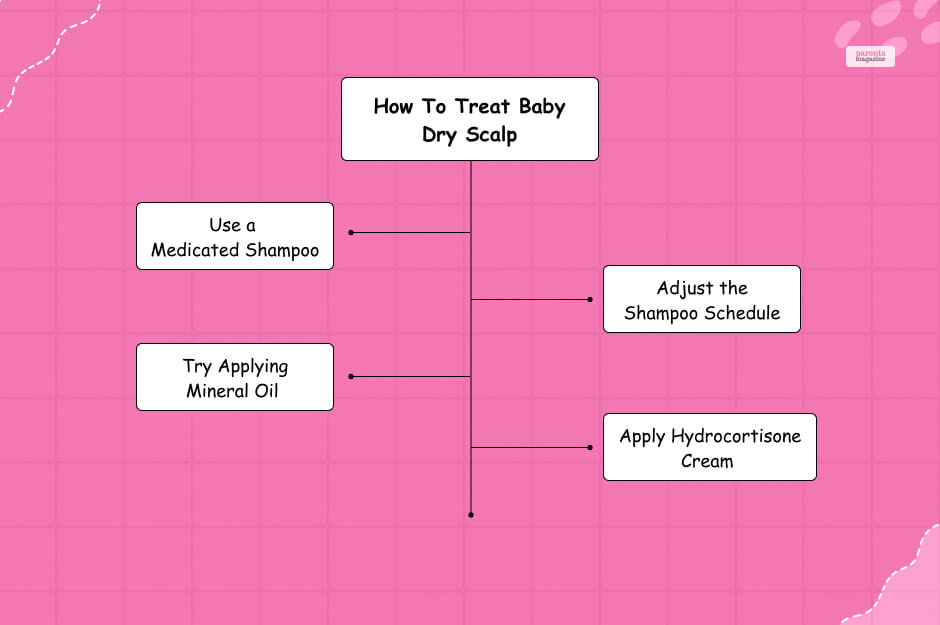
Treating baby dry scalp is not difficult. The condition is harmless and not very serious. You can treat this at home with a few tips. Here are those mentioned.
Use a Medicated Shampoo
Try to use shampoo that is specifically prepared for the babies. You can try some over-the-counter shampoos that are formulated keeping in mind the sensitive skin of the little ones.
These shampoos will make sure to lock in the moisture and prevent their scalp from drying out. However, if you are not sure which shampoo to pick, do contact your pediatrician or ask the pharmacist for some help.
You have to leave the shampoo for at least for 2 minutes on their scalp. And use it 2 to 7 days a week. Keep doing this until the condition improves.
Adjust the Shampoo Schedule
Shampooing the hair does not just remove oil and dirt from the hair, but also removes dirt and excess oil from the scalp. The number of times you shampoo them depends on the cause of dry scalp.
If this is happening because of the cradle cap then it might be helpful to shampoo their hair every day, and for any other cause, you can apply shampoo every alternate day.
Try Applying Mineral Oil
Mineral oil is believed to loosen the dry flakes that are stuck on the scalp, and this also reduces some symptoms of cradle cap. Even though this is one of the most common home remedies, there is no data backing this treatment.
So, if you still want to apply it, gently massage it on their scalp before you shampoo their hair. To make things better, gently comb their hair with a soft brittle brush and loosen the flakes. Leave it on before you rinse it off.
Apply Hydrocortisone Cream
Hydrocortisone creams are available easily. You will get these over the counter. It will reduce itchiness, redness, and inflammation. However, if the cradle cap is the reason for the infant cradle cap, then it is not going to help.
If the dryness is caused by eczema, then hydrocortisone cream can improve the situation in a week. However, it is better to consult a doctor before using this cream.
Tips To Prevent Baby Dry Scalp
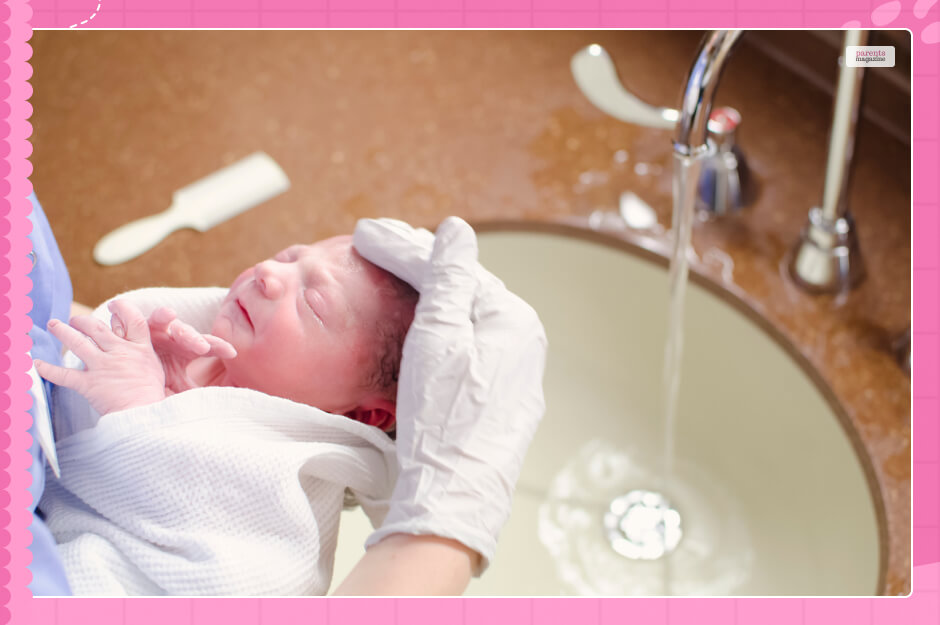
Baby dry scalp treatment depends a lot on the cause of the condition. Moreover, if you think it is not only about dry skin and there are some underlying reasons behind this, then you should immediately consult your doctor.
If this is something regular, then here are some tips to prevent this from continuing.
- Bathe them less frequently, especially your newborns.
- Do not shower them for a prolonged time, and always use lukewarm water.
- If you like in extreme weather conditions then make sure you use a hat when you go out in extreme cold, and use breathable fabric in summer but ensure to cover their heads.
- Do not take your little one out in the direct sunlight. Use proper accessories to protect them from the extreme heat.
- Use light ointment, obviously after consulting a doctor, when you notice a dry scalp.
- Using gentle fragrance-free soaps is suggested when you are bathing them, and use fragrance-free light detergents for washing their clothes.
When Should You Consult a Doctor?

Well, you can try your home remedies and when you see no improvement it is time to get help from a professional. Generally, the issue resolves in a few weeks, depending on the cause of dry skin.
However, if you see no improvement even after a week of treatment, consult the pediatrician immediately. They often recommend shampoo, or some steroid cream for the treatment of the underlying cause. Also, check for these symptoms. These are some of the early signs of infection.
- Oozing
- Cracking
- Bleeding
How Long Does Recovery Take?
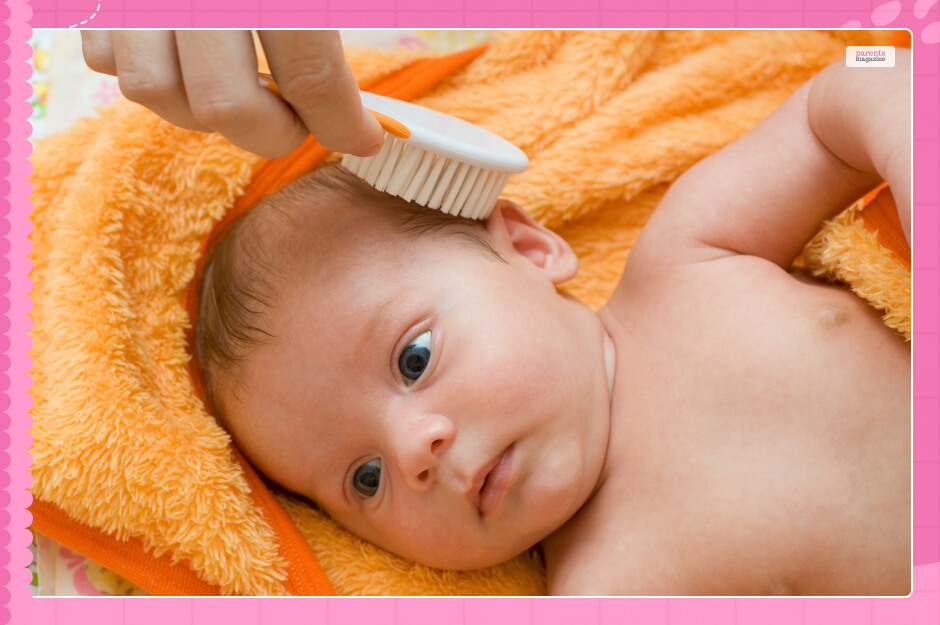
Dry baby scalp takes several weeks to recover. However, recovery time depends on the cause of the dry scalp. So, it is difficult to mention the exact time it might take to recover.
If it is caused by a cradle cap, then it will take some time to recover and once it does there is almost no chance to return. And some causes like eczema will need occasional treatment.
Conclusion
Baby dry scalp is normal, and most of the time there is nothing to worry about. Majorly, the cause behind this is the cradle cap. However, there are other causes as well, like allergies, dandruff, and eczema.
Try treating it at home and if nothing happens, then consult a pediatrician. Often there are some underlying signs of infection. So, be careful and take care of your little one.
Already have an account?
Sign In
Create your account
User added successfully. Log in






